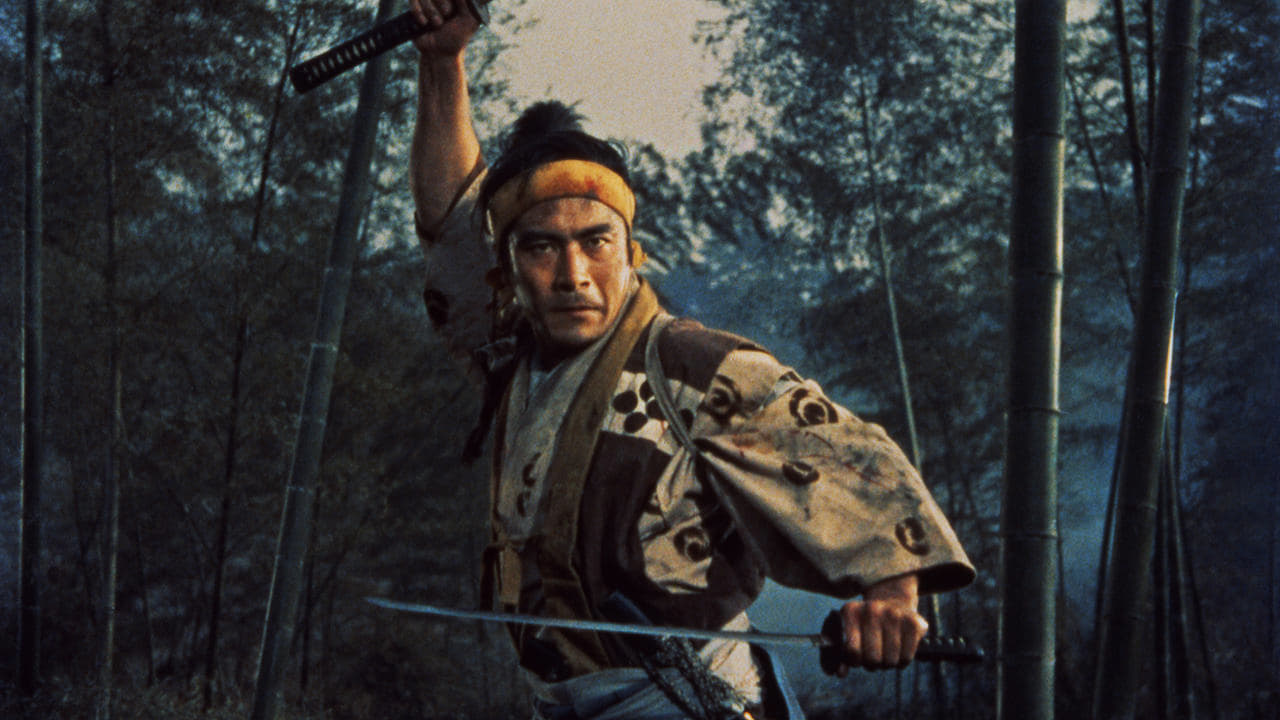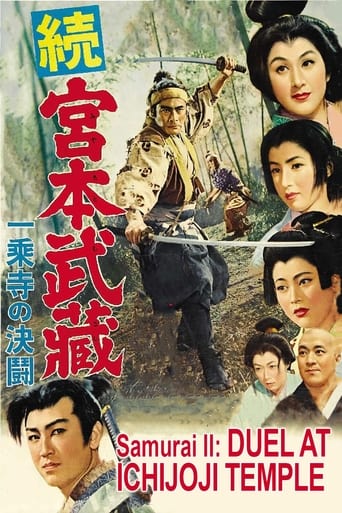

Hiroshi Inagaki's 1954-1956 three part color film, The Samurai Trilogy, is unlike many filmic trilogies for the very fact that it is, indeed, one exactly five hour long film, and not three separate linked films, for the first two films have no real endings. In this way it has much in common with The Lord Of The Rings trilogy. However, whereas those three are separate films, more or less, their source work is not. Yes, J.R.R. Tolkien's book is often printed in three separate volumes, but it is one work. This three part film is also derived from one singular literary work, from Eiji Yoshikawa's 1935 novel Musashi, loosely based upon the real life 17th Century Japanese folk hero, the samurai Musashi Miyamoto, who penned a classic book called The Book Of Five Rings. That all stated, the landscapes of Japan and sheer numbers of extras in this film are far more impressive, visually, than the CG crap that the Lord Of The Rings films spewed. Overall, The Samurai Trilogy is a good film, but while the narrative story gets better and tighter with each succeeding film, the visual quality of each succeeding film worsens on The Criterion Collection's three disks, both in the original film stock and the poor transfers.If nothing else, this film, The Samurai Trilogy, can be seen as a sort of training ground for the great Toshiro Mifune to try out and perfect a wide range of acting styles and characters within character that he would unleash on the film lovers of the world throughout the rest of his career, be it in his films with Kurosawa, or long after. And, if a film can be said to have allowed something like that to happen, then its merits are certainly more than its flaws, melodramatic or not. But, even on top of that, a film like this acts as a sort of entrée into the greater and deeper art put out by the aforementioned masters, and allows those great works of art to be more greatly appreciated, for contrast can clarify what the mists of the ineffable do not. In such a spirit, thank you sensei Inagaki.
... View MoreThe great cast that was in Musashi Miyamoto, the first part of this samurai trilogy continues in the second part with a few additions.By this time Musashi Miyamoto has been on the road for three years and is still learning. The most important lesson as a Samurai will not be learned until the film is almost over. Another important lesson comes quickly after that, and it will interesting to see how it plays out in the final part.In the opening Musashi Miyamoto is doing battle with a samurai similar to our buddy Hanzo. They are the only two I have ever seen use chains.After this he heads to Kyoto to do battle with the best in the capital, and also to get himself mixed up with the two women who are in love with him.Love, fickleness, treachery, rape, revenge, honor, and great sword fighting all have a place in this magnificent film.The amazing cinematography and scenery also place an important part.This is truly a samurai classic.
... View MoreMy view of this early Musashi trilogy is strongly coloured by the far-superior 1960's series of five. The first in this 1950's trilogy was a shattering disappointment. With Japan's greatest actor playing one of Japan's greatest folk heroes, how could you miss ? Well, the first one was flat. The pace was slow, and Mifune's exploding energy was kept well under control. Shame ! This second instalment corrected many of the problems of the first. The action is staged much better (with one caveat : see below), Mifune gets to be ferocious, as well as express a range of other emotions, including something close to love. The story is a bit disorienting, as it shows events in a different order to the 1960s series, but it still works well. The women throw themselves at our hero at a much faster rate, which gets things moving along nicely.Nevertheless, I have marked down this movie significantly for the incredible stupidity of setting most of the action scenes in the dark. Director, what were you thinking ?! Instead of having the duels at six in the morning, move them to seven or use a moonlit night. Hell, what a waste.
... View MoreThe tale of Myamoto Musashi - thief, lover, rogue, then warrior, hero and master - is enshrined in Japanese culture, perfect showcase material as it were. It has been adapted more than once to the screen, and Inagaki's classy, colorful version is perhaps the best known. It is everything you'd expect from a period samurai film if you've never seen one and harbor no negative preconceptions.After a playful first part that has a classic hero's journey structure, part II takes things to the next level without having to rush to the finish, and is the more interesting film. It allows the hero to wield his newfound power without the restraint and inner peace he will later find. It allows him the get mad, and nobody does unleashed fury like Toshiro Mifune, not when you throw 80+ armed fools in this way.I chose to review this one because it is a good sample of the very best this trilogy accomplishes: compelling archetypical characters, lush cinematography and that "oriental" elegance that always seduces non-Japanese audiences, drawn in as they are by the very universal plot and character dynamics.I cannot put it in the same leagues as the masterpieces of Kurosawa, Ozu and Kobayashi, but if it is to be a gateway film experience, then it is a bloody good one, and laudable for what it accomplishes.You might really enjoy this, and if you do, it's just the beginning!
... View More